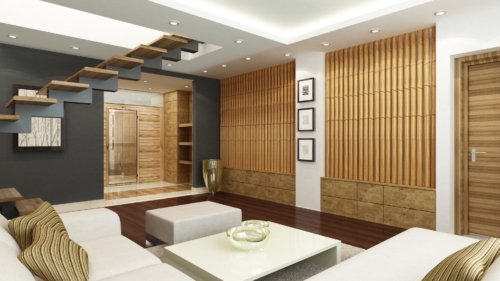Sustainable furniture and interior design have emerged as key solutions to address environmental concerns and promote responsible consumption and production. By integrating eco-friendly practices, these principles aim to minimize the negative impact of traditional design processes on the planet and human health.
In this article, we will explore the key principles that guide sustainable furniture and interior design, emphasizing their significance in creating a more sustainable and conscious future.
- Material Selection
- Energy Efficiency
- Minimal Waste
- Durability and Longevity
1. Material Selection: Choosing Earth-Friendly Materials
The first principle of sustainable furniture and interior design revolves around material selection. Designers prioritize materials with minimal environmental impact throughout their lifecycle, opting for renewable resources like FSC-certified wood, bamboo or recycled materials. Also they use non-toxic finishes and adhesives to ensure healthier indoor air quality. Thus, by selecting sustainable materials, designers reduce natural resource depletion and minimize the carbon footprint associated with furniture production.
2. Energy Efficiency: Minimizing Consumption, Maximizing Sustainability
Energy efficiency is a critical principle in sustainable design. Designers focus on minimizing energy consumption during the manufacturing and usage phases. This is achieved through various strategies, such as incorporating energy-efficient lighting solutions, utilizing natural lighting and ventilation to reduce reliance on artificial systems, and integrating smart technologies that optimize energy use based on user needs. By reducing energy demand, sustainable design not only conserves resources but also helps mitigate the impact of climate change.
3. Waste Reduction: Embracing Circular Economy
The third principle of sustainable furniture and interior design is waste reduction. Designers strive to minimize waste throughout the entire lifecycle of a product. This includes adopting innovative manufacturing techniques such as modular design, which allows for disassembly and reconfiguration, facilitating repair and reuse. Furthermore, recycling and upcycling materials are prioritized, diverting waste from landfills and reducing the need for new resource extraction. By embracing the principles of a circular economy, sustainable design aims to create a closed-loop system where waste is minimized, and materials are given new life.
4. Durability and Longevity: Creating Timeless and Resilient Designs
The final principle focuses on durability and longevity. Sustainable furniture and interior design prioritize the creation of products that are built to last. By using high-quality materials, employing skilled craftsmanship and considering user needs, designers create furniture and interior elements that withstand the test of time. Durable designs reduce the frequency of replacements, minimizing waste generation and conserving resources in the long run. Moreover, well-crafted and timeless designs have the potential to transcend trends, ensuring the longevity of the products and reducing the environmental impact associated with constant consumption.
Sustainable furniture and interior design are at the forefront of creating a more environmentally conscious future. By adhering to the four key principles of material selection, energy efficiency, waste reduction, and durability, designers and manufacturers are reshaping the industry. Embracing sustainable practices not only minimizes the negative impact on the planet but also enhances the overall quality and longevity of furniture and interior spaces of home. As consumers increasingly prioritize sustainability, the adoption of these principles becomes crucial for designing a more harmonious and sustainable world. By integrating these principles into their processes, the furniture and interior design industry can lead the way towards a greener and more responsible future.
Expand your knowledge on sustainable furniture designs by checking out 10 Sustainable Furniture Designs for a Greener Home.
About Us:
Founded in 2017, Satin and Slate is one of the elite interior design studios in Southern California. Located in Long Beach, this dedicated team of designers oversees from kitchen and bathroom renovations to commercial projects. Equipped with their own showroom/studio they can satisfy the needs of any client. Featuring clean lines, bright colors and fresh ideas Satin and Slate’s mission is to bring your vision to life and help transform your space into something extraordinary.









